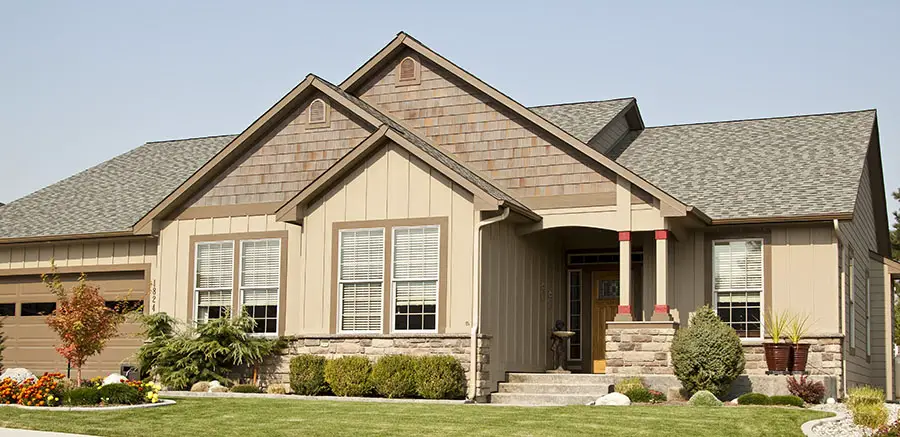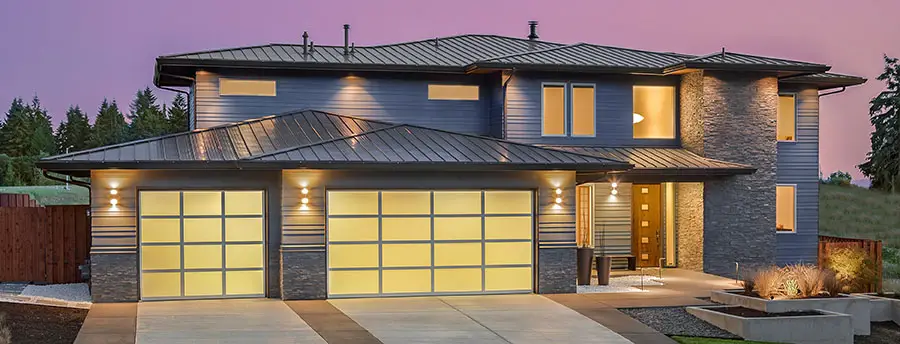Standard Roof Pitch – While building a construction, major attention is given to the design of the roof, because this part of building helps to protect the complete arrangement inside.
Contents
Roofs can be constructed with flat design and pitched form, and their shape depends upon so many factors that are pre-determined by builder to create best protection for construction.
Atmospheric conditions play an important role in roof design, as for snowy regions, it is good to keep sharper slopes of roofs, whereas for some specific geographical locations, flat roofs are preferable.
Typical Roof pitch is actually the measure of the roof’s slope expressed in ratio; in other words, it can be expressed as numerical measure of steepness of the roof.
Some well-defined standards are followed, while deciding about roof pitch, but in actuality the slope depends upon the type of roofing material and climatic conditions of the area.
Roof tile manufacturers put effort into testing their roof tiles under certain wind driven rainy conditions; after observing the results, they decide about pitch of the roof.
MAKING DECISION ABOUT ROOF PITCH
The roof pitch is described by the vertical rise divided by horizontal span; this part is well-known as Slope in geometry, tangent function, or stair construction in trigonometry.
The British standard for tilling and slating provides specific guidance about double lapped slating, where calculations and recommendations for pitch and lap of slate are based on maximum length of rafter; it allows maximum length up to 9 meters for the area, where average rainfall is limited to 56 litters/ square meters in a spell.
Usually, average roof pitch is determined using the same roof length method; commonly, it is 3/4th of span, as per Gothic rafter must be equal to span. Greek says one must keep rafter length in range of 1/9 to 1/7th of span, but as per Roman style, the standard dimensions are kept about 1/3 to 2/9th of span with an angle of 23 to 24 degree.
Elizabethans keep rafters longer, compared to span. As per imperial system of measurements, rafter pitch is expressed in rise then run, dominated by a number 12 that gives a ratio for number of inclines per 12 inches of run; the most common examples are 3:12, 5:12 etc.
For those countries where metric system of measurement is preferred, above specifications are determined in degree angle.

Some of the most useful roof pitch types are:
- Low Pitched Roofs:When we keep the pitch of the roof below 3 ½, they are called low-pitched roofs. They can be constructed easily at low cost, but one cannot use asphalt shingles for low-pitched roof design. These types of roofs demand quality materials and demand time to time maintenance.
- Medium Pitched Roofs:Most roofs in America follow these dimensions, where pitch range is kept between 3 ½ to 7 1/2. If you want to build a shed, garage, or other similar type of building, then 4 to 6 is a preferable pitch type. An average person can easily and safely walk upon these roofs, without need of additional equipment.
- Steep Pitched Roofs:Anything above 7 ½ will be called a steep-pitched roof; one may require safety equipment to keep materials and roofer safe from sliding off, but these roof pitches are efficient, capable to serve for years.
The standard roof slope follows the conventions of using whole numbers for measurements to ensure even distribution, or one can use up to two digit fractions : four and quarter in twelve or we can write it as 4.25:12.
The pitch of the roof depends upon so many factors, like type of material, weather conditions, and many more, but one of the major concerns for modern society is architectural style, where the steep pitch is named Gothic Architecture, and the low pitch is termed Classical Architecture.
The mixture of many pitches is named a gambrel roof; the basic ranges are not defined, but they usually range from flat.
One thing is important to note; it is not designed with a perfectly flat structure; rather, it has a slight slope for water draining with a range of ½:12 – 2:12.
The typical roof slope follows specific materials and design techniques to ensure perfect safety from leakage; a common range is given from 1:12 to 4:12, whereas conventional dimensions vary from 4:12 to 9:12, but the steep roofing technique follows slope above 9:12 with additional fasteners.
Actually, the major purpose of paying attention to roof design is that we need to redirect rain water and snow.
Due to this reason, we follow larger pitch angles at areas where heavy snowfall and rainfall occurs; the highly steeped pitches are useful in tropical areas, where heavy snowfall occurs.
Some of the most common roof pitch types are conventional slope type roofs, designed with pitch ranging from 4/12 to 9/12; these are utilized in residential applications.
Roof pitches exceeding the level of 9/12 or approximately 37 degrees are termed steep-slope roofs. If we consider the commercial applications, then low sloop type roofs are preferred, with pitch ranging from 2/12 to 4/12.
Various materials pose limitations over roof pitches or slopes, as experts say flat or low slope type roofs should not be designed using asphalt shingles, because then it becomes much easier for water to infiltrate through roofing material.
Asphalt shingles suit best for some conventional pitch types that range from 4/12 to 9/12.
If we consider low sloop type roofs then a rubber or tar-and-gravel membrane works best for them, but they should not be applied to conventional slops, as the installation process becomes difficult, and these unattractive materials become visible with this highly angled roof construction. One can use shingles and tiles for steep roofs.

Common roof slopes include standard designs, based on residential or commercial applications.
Some conventional slopes are preferred for residential constructions with pitch size of 4/12 or 9/12, whereas for commercial applications, low slope type roofs are a good option.
The minimal allowable size of slope for perfect drainage is ¼ inches per foot. Steeper slopes on roofs give a more pleasing appearance that can last longer and allow fast draining of water, so ice damming can be avoided.
The average roof slope must be decided to allow perfect water drainage, so the house can avoid any damage.
WHAT IS THE STANDARD ROOF PITCH FOR HOUSE SHED?
While deciding on type of roof pitch for home, you have to make considerations based upon style of house you will build or renovate and atmospheric conditions of that area.
Analysts reveal that, for traditional houses, it is good to construct steeper pitch designs with some Victorian and art and craft designs. For example, the vernacular stone type roofs of Yorkshire demand shallower pitch, and it adds more beauty to your construction.
Actually, the pitch of roof not only works for looks of your house; rather, it plays an important role to create water drainage mechanism. With lower pitch, a roof will collect more water so tiles must be capable to cope with this volume with no risk of leakage.
An angle of 35 degrees at minimum level is compulsory for clay or slate to ensure perfect safety from water leakage; if you want to go below this limit, then interlocking concrete tiles are the best option.
For Georgian style homes, the preferable pitch angle is 39 degrees; whereas for arts and craft house, you can exceed up to 51 degrees.
FLAT ROOF SLOPE
A perfectly designed roof incorporates specialized slope over surface that supports a substrate or roof membrane.
A typical flat roof slope, designed to support drainage points, allows the accumulated water in rainy season to drain perfectly, eliminating the risk of roof ponding.
Usually, after rainfall, some residual water remains on the surface of flat or so-called low slope roofs, one must do proper arrangements to allow complete draining within sufficient time. Flat slope type roofs can be designed using two methods:
- Slope can be assembled into the actual building structure; here, the structural roof hang is slopped in such a manner that the installed roof membrane becomes sloppy.
- As per this technique, the slope is constructed using a specialised tapered insulation process; here, specific designs and drawings are prepared for roof drafting, then the tapered insulation is installed as per these specifications, using perfect dimensions in such a manner it creates a sloped substrate above roof deck. The roof membrane follows a sloppy installation. If slopes are not involved in design, then deflections of roof deck and substrate cause some uneven surfaces, resulting in water ponding.
